Traditional farm buildings are an important part of the agricultural history in Ireland, and when in good repair are extremely aesthetically pleasing.
The issue with them is that when they fall into disrepair, they are costly to refurbish, can be of limited use and the skills and care that it takes to repair them take up many working hours.

Frank Keoghan has just recently completed work on a range of traditional farm buildings, some dating back to the early 1800s on his beef farm in Co Kilkenny.
The above has led many such buildings to collapse or be knocked. Thankfully, one such range of buildings was recently restored in north Kilkenny, thanks to the patience and passion of farmer Frank Keoghan, and the Traditional Farm Buildings Grant Scheme.
State of disrepair
The buildings in question lie behind a fine Georgian style farmhouse, the Keoghan residence, in what was the traditional animal housing of the farm before slatted houses for cattle were built.

Extensive work went into the roof of the slated cow byres, with slates being matched up to new timber batons.
“I suppose their usefulness went away to an extent when we built other sheds for animal accommodation, but they remained in relatively good condition, with some minor repairs done throughout the years.
“The issue was spending money (and a great deal of time) on something that you were not going to see a financial return on.
“With the proximity of the sheds to the house, I was anxious to do repair work before they fell into dilapidation. Once the roof falls in on buildings like this, the walls start falling and it can be beyond repair then.”
Keen for this not to happen to his own yard, Frank applied for the Traditional Farm Buildings Grant Scheme earlier this year, and after acceptance, began work on the range of buildings.
A range of buildings were tackled in the process. Two traditional cow byres, one being a double adjacent to a single, are the main buildings in the block.
Both were built of local limestone (random and linear), with dressed quoins and doorjambs, brick arches and wrought iron forged gates to the door openings, narrow chamfered-to-interior lancet windows, with the double byre featuring a hipped-to-the-free-end natural stone slated roof with clay ridge tiles, with the single byre being a pitched roof.

The before: the roof, particularly the slated side, was in poor repair and required extensive work.
The walls were in good condition, as was the roof structure, though the slates on the roof had failed on much of the roof, allowing water to permeate, damaging some of the roof timbers.
An additional larger building, which had previously been a two storey but was reduced to a single storey after a fire, contained a steel cladded roof with concrete barges completed some years ago. Again, the stone work was in good repair.
The final part of the array was a small, lean-to building used for animal accommodation.
This again had some dressed stone along with random rubble walls, with the steel cladded roof in poor repair. The total ground floor area of all the buildings came to 170m3.

The during: the reclaimed slates were carefully put back on the roof, with slate size correlated to the batten spacing.

In the monopitch roof, new timbers were slotted in under the cladding where required.
Works commenced in early September, principally with the slate roofs on both the single and double cow byres being stripped, with all existing ridge tiles and slates carefully taken down and stacked neatly on the scaffolding. Scaffolding was erected to enable the works and for safety.

Some of the repointing work on the old pig house to the rear of the main block of buildings.
Once the slates were removed, the timbers were then inspected, with most members found to be sound, with the exception of some rafters, and some sections of wall plate. All existing timbers were treated with a triple-acting preservative and defective timbers replaced with treated timbers.
Once re-battened, good slates were reinstalled to the cow byres, with some slates saved by Frank from other buildings also used.
The first row of slates were bedded in a natural hydrate lime (NHL) mortar. The decision was made not to strip the cladded roof of the larger building, with new timbers slotted in as required underneath the cladding, with additional fixings inserted from above.
A new steel-cladded roof, however, was required on the lean-to building on the back, with none of the old timbers or cladding salvageable from this.
A zinc galvanised cladding and treated timbers were used for this. This was the only building that required some repointing of the walls, with the old mortar scraped out and a traditional lime mortar mix used.
A range of wrought iron gates that were used to seal off some of the door openings were also repaired and reinstated by Frank, while three sets of double timber doors were also manufactured and installed in the openings of the single byre and the larger mono pitched building.

An example of the layered stone on the double cow byre.
Repairs to some gates leading into the yard, as well as the installation of roof gutters on some of the buildings that previously showed evidence of having gutters in the past, completed the works.
Total of 886
hours of work
The results speak for themselves when looking at the completed works.
The re-slating of the roof on the two cow byres is probably some of the most impressive work, and is undisguisable from new owing to the traditional methods and natural slate used, though the repairs to the cladded roof on the mono-pitch building have also returned it to a functioning space.

The restored double and single cow byres, which Frank hopes can be returned to being used for livestock again.
The timber doors on the buildings now make these a weather-proof store and give purpose to the building, which Frank plans to use for storage.
“I’m really happy with how it turned out,” stated Frank, “and the Traditional Farm Buildings Grant made it all possible. I have to commend the main contractor on the job Shem Kelly for his workmanship”.
The contractor Shem Kelly spent 400 hours on the project while Frank himself estimated that he spent 320 hours.
The repairs completed by iron work specialist Paughie Begadon for the gates took 100, while architect Fintan Dunne spent circa 30 hours on the project. The ecologist who completed the bird and bat survey spent six hours as part of his assessment.

One of the newly made wrought iron gates on the old pig house by Paughie Begedon.
Results
With the results of the first project, Frank now looks forward to hopefully completing further works on more traditional buildings within the farmyard, with some natural slates and clay ridge tiles salvaged from the first project carefully stored to be used for this reason.
The total cost of the project is about €35,000 before grant aid. Very little was spent (about €5,000) on materials, with no slates being purchased.
Despite little repointing work having to be done, one tonne of lime and six tonnes of sand were used for the bed for the slates and the other areas requiring lime mortar.
The project was very labour-intensive, particularly the slating work.
Frank noted several times the time, patience and skill of Shem Kelly, the main contractor.

Slating was a major part of the job, from the stripping and sorting of the old slates to reslating the new roof.
Frank is hopeful that he will be able to reclaim 75% (maximum grant rate) of the cost of the project through the Traditional Farm Buildings Grant Scheme, with the scheme funded by the Department of Agriculture and the Heritage Council and administered by the Heritage Council.
He is hoping to reapply for the scheme in the future to complete works on other buildings within the yard after his positive experience this time round.
One of the most valuable grants for farm buildings
It’s always a pleasure to see projects like this completed, and credit must go to Frank and Shem for their work. The Traditional Farm Buildings Grant Scheme is the only thing that makes projects like these anyway feasible.
If the grant aid wasn’t there, it would be very hard to justify spending time and money on these buildings, as Frank pointed out. Even with the grant aid, projects like these need passionate people behind them, which Frank obviously is.
The roof structure was the main area requiring work, with careful restoration of the slate roof, in particular, taking time.Over 800 hours of work between Shem Kelly, Paughie Begadon and Frank went into the project.Excluding his own labour, the project looks set to cost €35,000 before grant aid.Frank hopes to restore more buildings in the yard in the future.
Traditional farm buildings are an important part of the agricultural history in Ireland, and when in good repair are extremely aesthetically pleasing.
The issue with them is that when they fall into disrepair, they are costly to refurbish, can be of limited use and the skills and care that it takes to repair them take up many working hours.

Frank Keoghan has just recently completed work on a range of traditional farm buildings, some dating back to the early 1800s on his beef farm in Co Kilkenny.
The above has led many such buildings to collapse or be knocked. Thankfully, one such range of buildings was recently restored in north Kilkenny, thanks to the patience and passion of farmer Frank Keoghan, and the Traditional Farm Buildings Grant Scheme.
State of disrepair
The buildings in question lie behind a fine Georgian style farmhouse, the Keoghan residence, in what was the traditional animal housing of the farm before slatted houses for cattle were built.

Extensive work went into the roof of the slated cow byres, with slates being matched up to new timber batons.
“I suppose their usefulness went away to an extent when we built other sheds for animal accommodation, but they remained in relatively good condition, with some minor repairs done throughout the years.
“The issue was spending money (and a great deal of time) on something that you were not going to see a financial return on.
“With the proximity of the sheds to the house, I was anxious to do repair work before they fell into dilapidation. Once the roof falls in on buildings like this, the walls start falling and it can be beyond repair then.”
Keen for this not to happen to his own yard, Frank applied for the Traditional Farm Buildings Grant Scheme earlier this year, and after acceptance, began work on the range of buildings.
A range of buildings were tackled in the process. Two traditional cow byres, one being a double adjacent to a single, are the main buildings in the block.
Both were built of local limestone (random and linear), with dressed quoins and doorjambs, brick arches and wrought iron forged gates to the door openings, narrow chamfered-to-interior lancet windows, with the double byre featuring a hipped-to-the-free-end natural stone slated roof with clay ridge tiles, with the single byre being a pitched roof.

The before: the roof, particularly the slated side, was in poor repair and required extensive work.
The walls were in good condition, as was the roof structure, though the slates on the roof had failed on much of the roof, allowing water to permeate, damaging some of the roof timbers.
An additional larger building, which had previously been a two storey but was reduced to a single storey after a fire, contained a steel cladded roof with concrete barges completed some years ago. Again, the stone work was in good repair.
The final part of the array was a small, lean-to building used for animal accommodation.
This again had some dressed stone along with random rubble walls, with the steel cladded roof in poor repair. The total ground floor area of all the buildings came to 170m3.

The during: the reclaimed slates were carefully put back on the roof, with slate size correlated to the batten spacing.

In the monopitch roof, new timbers were slotted in under the cladding where required.
Works commenced in early September, principally with the slate roofs on both the single and double cow byres being stripped, with all existing ridge tiles and slates carefully taken down and stacked neatly on the scaffolding. Scaffolding was erected to enable the works and for safety.

Some of the repointing work on the old pig house to the rear of the main block of buildings.
Once the slates were removed, the timbers were then inspected, with most members found to be sound, with the exception of some rafters, and some sections of wall plate. All existing timbers were treated with a triple-acting preservative and defective timbers replaced with treated timbers.
Once re-battened, good slates were reinstalled to the cow byres, with some slates saved by Frank from other buildings also used.
The first row of slates were bedded in a natural hydrate lime (NHL) mortar. The decision was made not to strip the cladded roof of the larger building, with new timbers slotted in as required underneath the cladding, with additional fixings inserted from above.
A new steel-cladded roof, however, was required on the lean-to building on the back, with none of the old timbers or cladding salvageable from this.
A zinc galvanised cladding and treated timbers were used for this. This was the only building that required some repointing of the walls, with the old mortar scraped out and a traditional lime mortar mix used.
A range of wrought iron gates that were used to seal off some of the door openings were also repaired and reinstated by Frank, while three sets of double timber doors were also manufactured and installed in the openings of the single byre and the larger mono pitched building.

An example of the layered stone on the double cow byre.
Repairs to some gates leading into the yard, as well as the installation of roof gutters on some of the buildings that previously showed evidence of having gutters in the past, completed the works.
Total of 886
hours of work
The results speak for themselves when looking at the completed works.
The re-slating of the roof on the two cow byres is probably some of the most impressive work, and is undisguisable from new owing to the traditional methods and natural slate used, though the repairs to the cladded roof on the mono-pitch building have also returned it to a functioning space.

The restored double and single cow byres, which Frank hopes can be returned to being used for livestock again.
The timber doors on the buildings now make these a weather-proof store and give purpose to the building, which Frank plans to use for storage.
“I’m really happy with how it turned out,” stated Frank, “and the Traditional Farm Buildings Grant made it all possible. I have to commend the main contractor on the job Shem Kelly for his workmanship”.
The contractor Shem Kelly spent 400 hours on the project while Frank himself estimated that he spent 320 hours.
The repairs completed by iron work specialist Paughie Begadon for the gates took 100, while architect Fintan Dunne spent circa 30 hours on the project. The ecologist who completed the bird and bat survey spent six hours as part of his assessment.

One of the newly made wrought iron gates on the old pig house by Paughie Begedon.
Results
With the results of the first project, Frank now looks forward to hopefully completing further works on more traditional buildings within the farmyard, with some natural slates and clay ridge tiles salvaged from the first project carefully stored to be used for this reason.
The total cost of the project is about €35,000 before grant aid. Very little was spent (about €5,000) on materials, with no slates being purchased.
Despite little repointing work having to be done, one tonne of lime and six tonnes of sand were used for the bed for the slates and the other areas requiring lime mortar.
The project was very labour-intensive, particularly the slating work.
Frank noted several times the time, patience and skill of Shem Kelly, the main contractor.

Slating was a major part of the job, from the stripping and sorting of the old slates to reslating the new roof.
Frank is hopeful that he will be able to reclaim 75% (maximum grant rate) of the cost of the project through the Traditional Farm Buildings Grant Scheme, with the scheme funded by the Department of Agriculture and the Heritage Council and administered by the Heritage Council.
He is hoping to reapply for the scheme in the future to complete works on other buildings within the yard after his positive experience this time round.
One of the most valuable grants for farm buildings
It’s always a pleasure to see projects like this completed, and credit must go to Frank and Shem for their work. The Traditional Farm Buildings Grant Scheme is the only thing that makes projects like these anyway feasible.
If the grant aid wasn’t there, it would be very hard to justify spending time and money on these buildings, as Frank pointed out. Even with the grant aid, projects like these need passionate people behind them, which Frank obviously is.
The roof structure was the main area requiring work, with careful restoration of the slate roof, in particular, taking time.Over 800 hours of work between Shem Kelly, Paughie Begadon and Frank went into the project.Excluding his own labour, the project looks set to cost €35,000 before grant aid.Frank hopes to restore more buildings in the yard in the future.














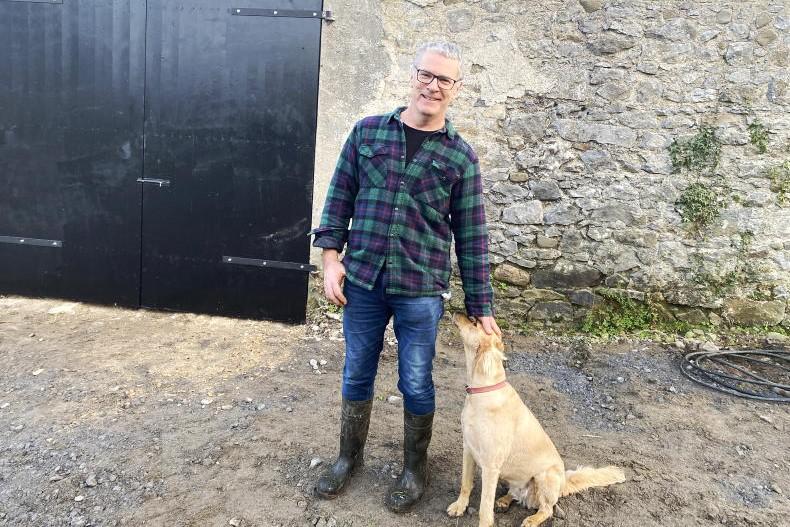
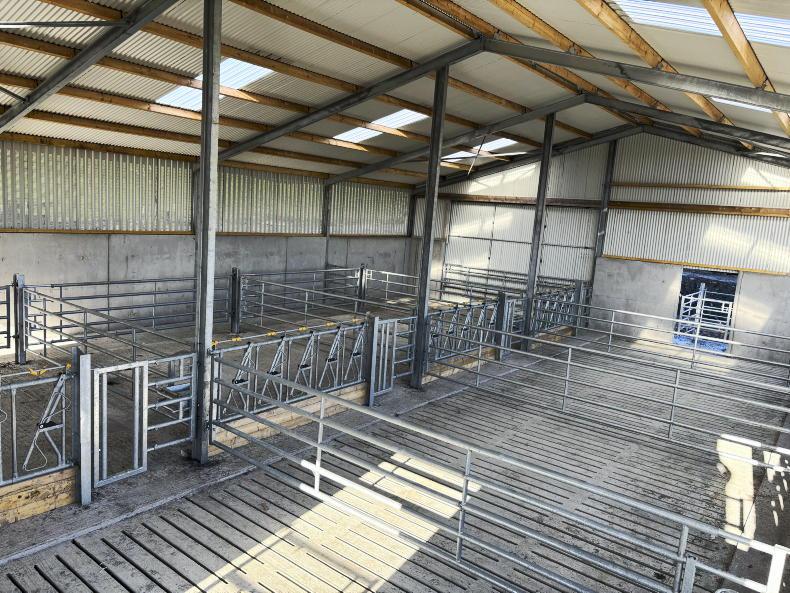

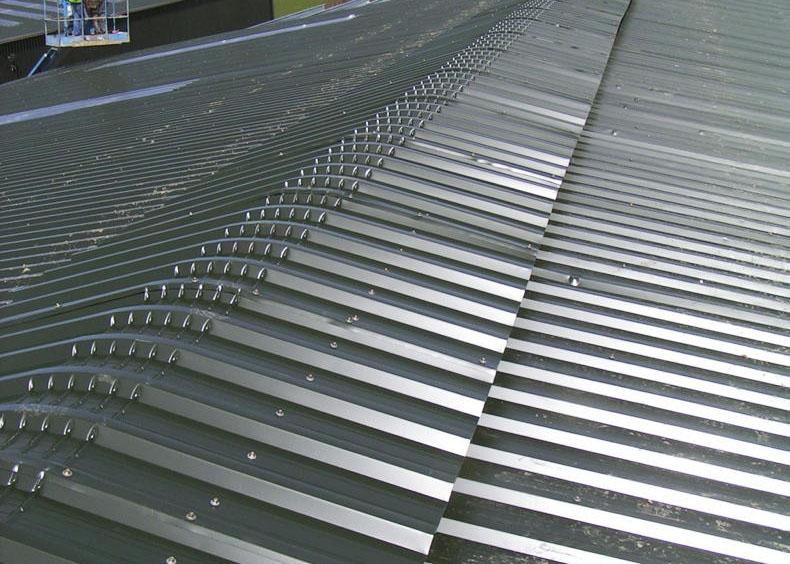
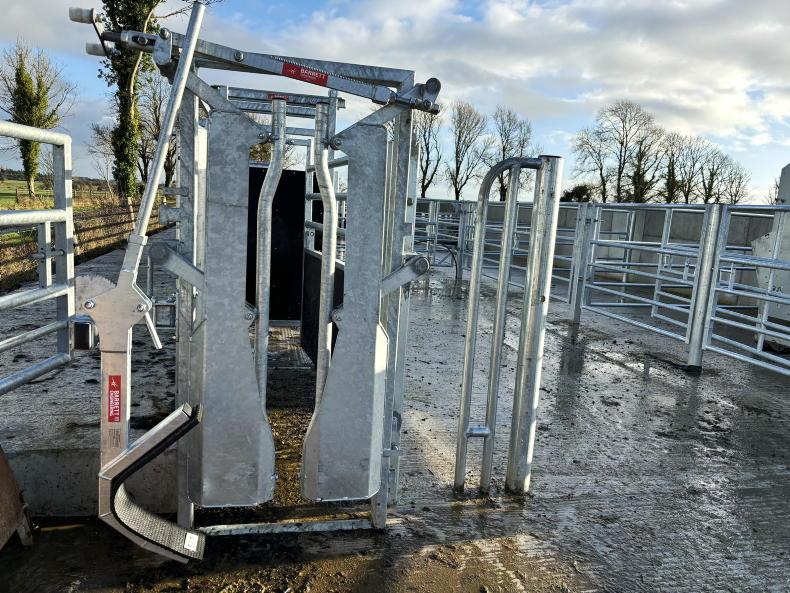
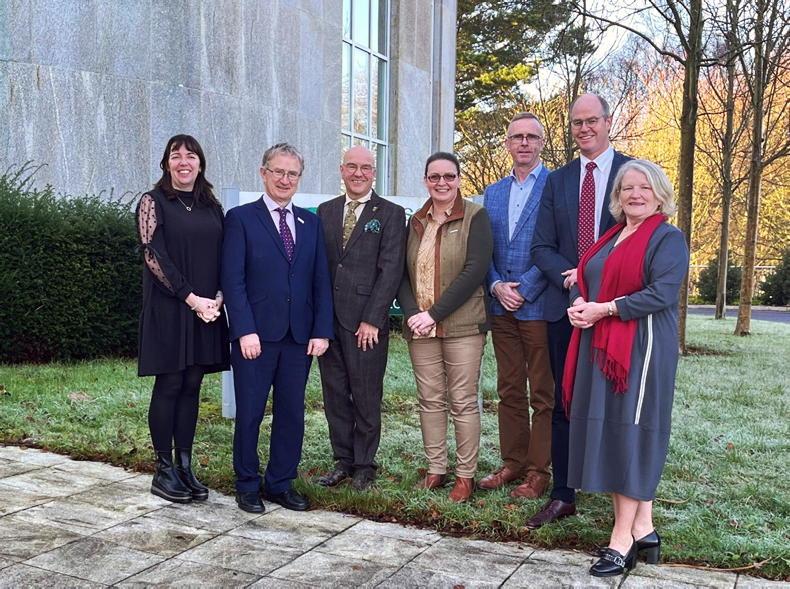
SHARING OPTIONS